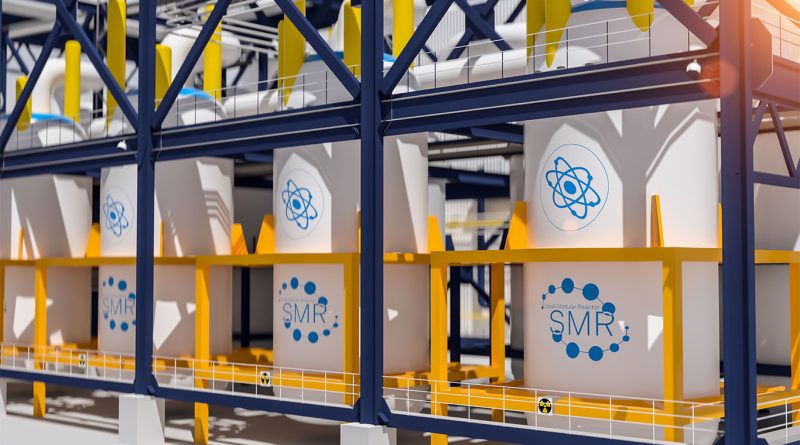How Project Pele will bring TRISO-fueled microreactors online by 2028
Subscribe to our free newsletter today to keep up to date with the latest energy, oil and gas news.
In the rolling foothills of Lynchburg, Virginia, engineers have begun constructing what could become one of the most consequential energy systems of the next decade. Under the oversight of the U.S. Department of Defense, Project Pele aims to deliver the nation’s first mobile nuclear microreactor by 2028. Developed in partnership with BWX Technologies (BWXT) and X-energy, the initiative represents a new phase in military energy planning, designed to support power needs in remote, contested, or infrastructure-poor environments.
Unlike traditional reactors intended for civilian grids, Project Pele’s system is tailored for military use. Its purpose is to provide resilient, reliable, and transportable nuclear power in scenarios where diesel supply lines are vulnerable or infeasible. The goal is to reduce the military’s dependence on long fuel convoys, which have historically been both costly and dangerous, particularly in forward-operating environments.
This is more than an engineering milestone. It reflects a high-stakes strategic bet that microreactors, powered by TRISO fuel particles known for their safety and stability, can become a viable tool for defense operations in the field.
Project Pele’s technical foundation
At the core of Project Pele is a 1.5-megawatt high-temperature gas-cooled reactor. The unit uses TRISO fuel, which consists of uranium kernels coated in layers of carbon and ceramic. These coatings are designed to retain fission products even under extreme conditions, significantly reducing the risk of radiation release.
Fabrication of the reactor’s core is already underway at BWXT’s Nuclear Innovation Campus in Lynchburg. The full reactor is being developed to fit within a standard shipping container, enabling transport by road, rail, or air. This design allows for rapid deployment with minimal supporting infrastructure, which is critical for operations in unstable or remote areas.
The concept is simple in theory but complex in execution. The military is not simply looking for a new energy source. It is seeking a system that can be deployed quickly, operated safely with limited personnel, and maintained with minimal logistical burden. These criteria have guided every phase of Project Pele’s development.
BWXT has stated that this is not a laboratory prototype. It is a real system designed to meet real operational requirements. The company expects to complete assembly and begin rigorous testing well in advance of the 2028 deadline.
Civilian implications and commercial potential
Although Project Pele is being developed for the Department of Defense, the potential applications go far beyond the military. If successful, Pele could demonstrate that small-scale nuclear systems can provide carbon-free, on-demand power in regions where conventional energy infrastructure is lacking or unreliable.
Industries such as mining, remote research, telecommunications, and disaster relief have shown interest in transportable nuclear systems. These sectors often operate in locations where diesel fuel is expensive or unavailable and where solar or wind systems may not provide reliable baseload power.
Microreactors like Pele offer a compact and continuous energy source that can operate for years without refueling. Their autonomous controls and small footprints make them suitable for sites that cannot accommodate large-scale infrastructure. As the world moves toward decarbonization and distributed energy models, systems like Pele could play a role in supporting off-grid applications and reducing dependency on fossil fuels.
However, civilian use of microreactors will face regulatory hurdles. The U.S. Nuclear Regulatory Commission is currently examining how to adapt its licensing frameworks to accommodate these new technologies. Questions also remain around fuel supply chains, waste disposal, and community acceptance.
Strategic concerns and operational risks
Despite its promise, Project Pele faces considerable challenges. Deploying a nuclear reactor in a military context introduces both practical and political risks. Even with TRISO’s enhanced safety profile, the presence of nuclear material in or near combat zones may raise concerns among allies, adversaries, and non-proliferation watchdogs.
There is also uncertainty about the operational complexity of maintaining and securing these systems in dynamic environments. Unlike fixed-site reactors, Pele will require specialized training, mobile shielding, and secure fuel handling protocols. These factors could complicate widespread adoption or lead to delays in deployment.
Another obstacle is the supply of HALEU, or high-assay low-enriched uranium, which is the type of fuel required for many advanced reactors, including Pele. Currently, much of the global supply chain for HALEU is controlled by Russia, adding a geopolitical layer of complexity to an already sensitive technology.
Nonetheless, the Department of Defense appears committed. For defense planners, the ability to generate power independently of fragile supply lines has become a strategic imperative. Powering radar systems, communication infrastructure, and unmanned platforms in remote theaters requires energy sources that are both reliable and logistically sustainable. Pele addresses these needs directly.
A model for next-generation nuclear innovation
Project Pele could also serve as a catalyst for broader innovation within the nuclear sector. As the U.S. government seeks to expand its nuclear energy capacity in the coming decades, microreactors may emerge as a complementary solution alongside large-scale small modular reactors.
Other companies, such as Westinghouse and Oklo, are pursuing parallel designs aimed at commercial and civilian markets. The Department of Energy has launched its own initiatives, including the MARVEL microreactor project in Idaho, to explore how such systems can integrate with renewable energy and hydrogen production.
If Pele proves successful, it could help normalize the concept of small-scale nuclear reactors as tools not only for defense, but also for climate resilience and energy equity. It offers a vision of nuclear energy that is mobile, modular, and mission-focused, departing from the conventional model of centralized nuclear power plants.
Sources:
Global Construction Review
